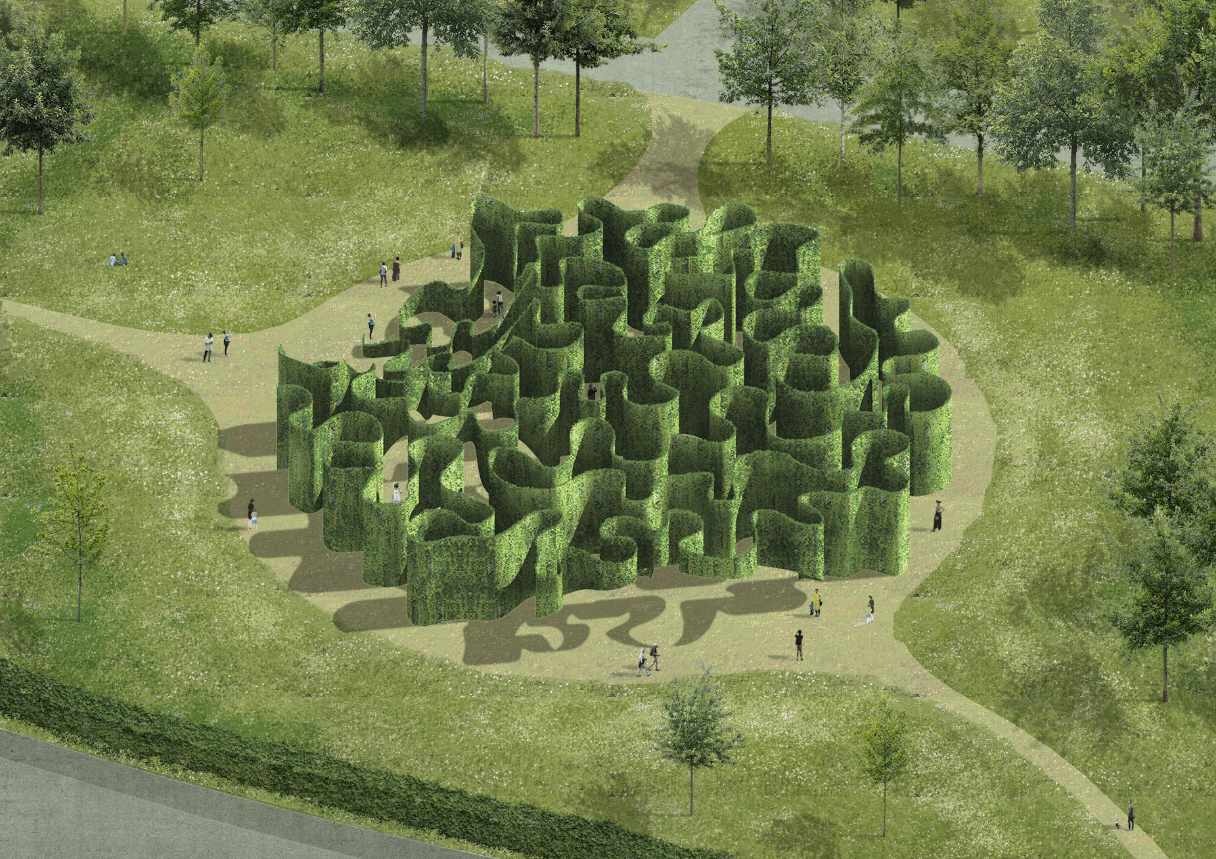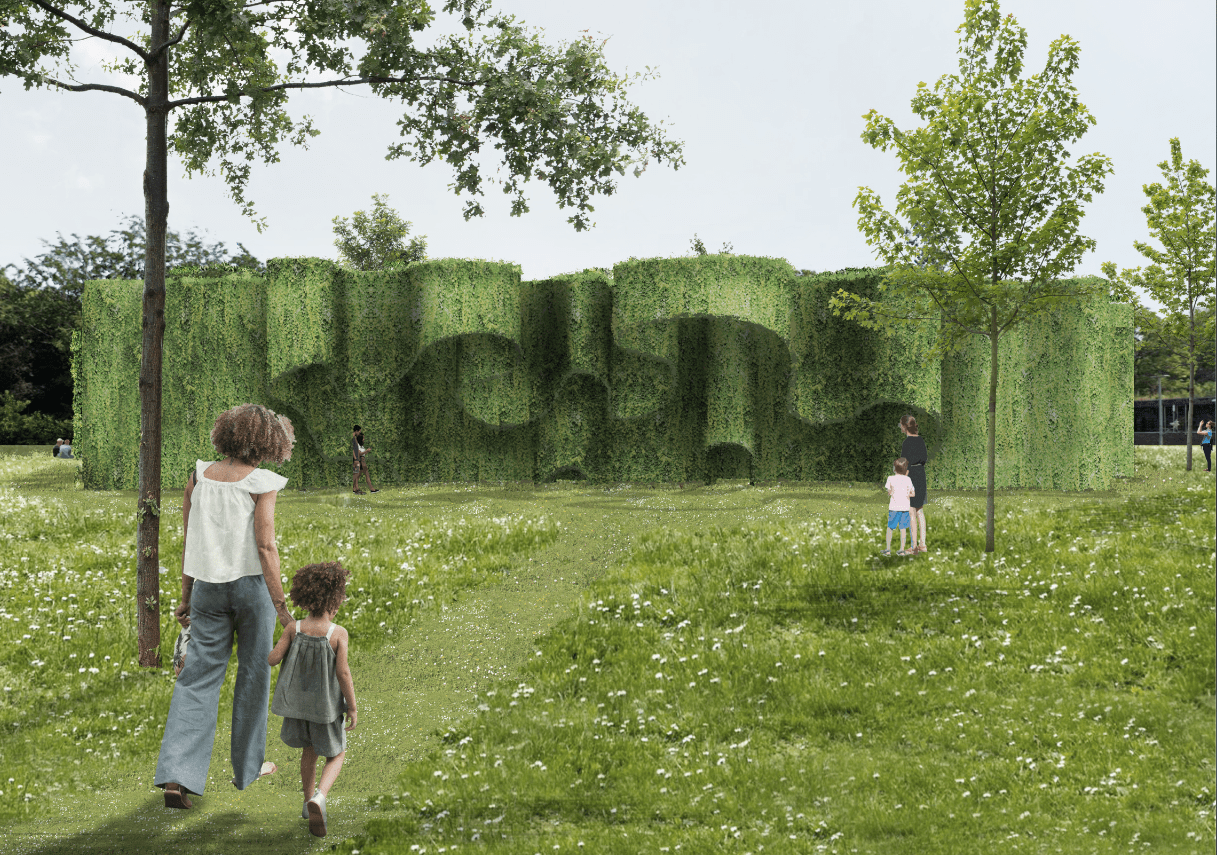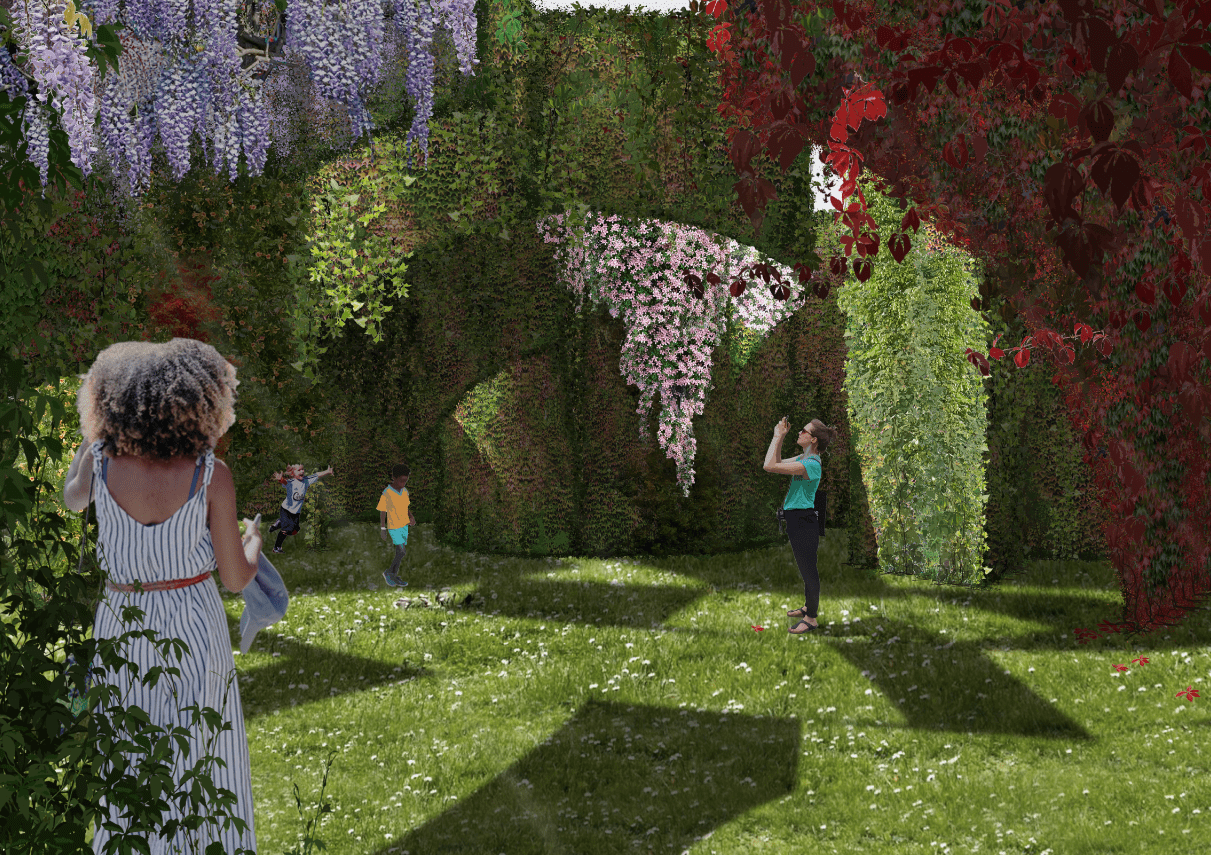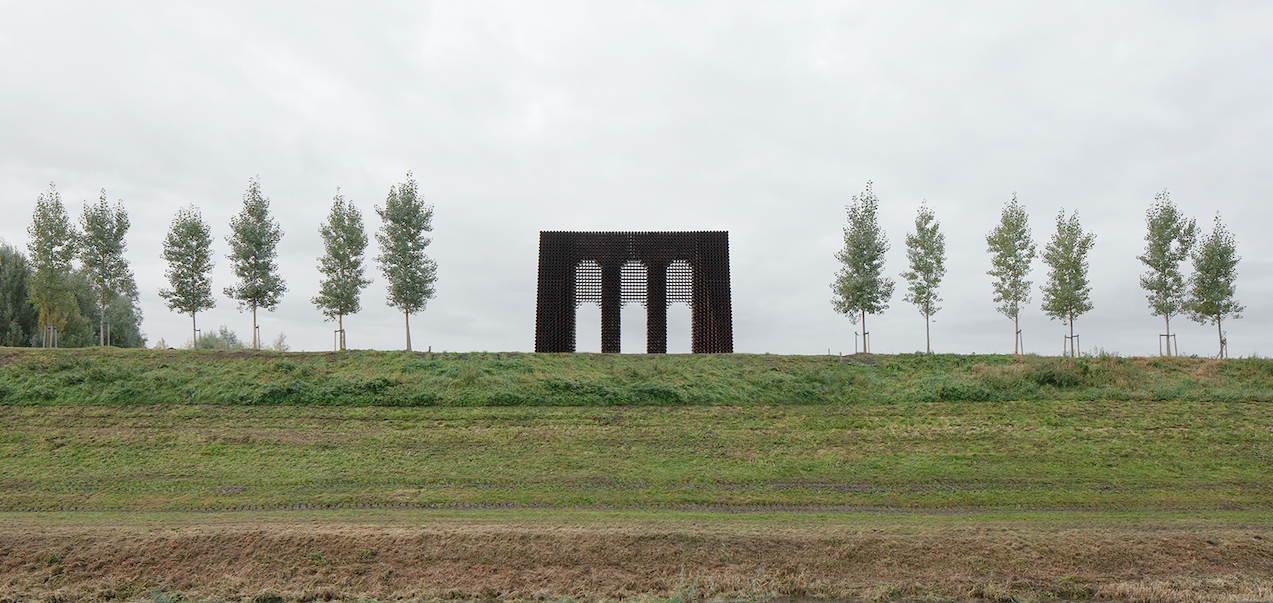Gijs Van Vaerenbergh’s Follies
Featured in AA's latest issue « Follies », the Waterline Monument in Utrecht's Laagraven Park is made of 1,814 Corten steel tubes. For AA, the Belgian architects and artists behind Gijs Van Vaerenbergh look back at this site-specific intervention and their approach to follies.
What is the context and aim of the project?
The New Dutch Waterline was a historic defence line measuring 85 kilometres in length. This ingenious system of dikes, sluices, canals, forts, and bunkers, capable of creating deliberate floods, was used in the period between 1815 and 1940. The Waterline made it possible to flood kilometres of land in the west of the Netherlands, thus making the area inaccessible to the enemy. The New Dutch Waterline has been on the UNESCO World Heritage list since 2021. To mark the occasion, the Province of Utrecht launched a competition for the creation of a new work of art in honour of the New Dutch Waterline. Our proposal that won the competition was conceived as a contemporary monument celebrating and honouring the New Dutch Waterline.
The challenge was to visualize a defence system that is almost hidden in the landscape. We chose to work with the image of a lock, one of the most important elements in this system, used as a gate to hold back the waters. As such, it forms a crucial link between dikes and embankments. When it is opened, the defence system is activated, causing the water to overflow the banks and inundate the area. The artwork is an abstract reconstruction of the figure of the lock. Placed on top of the slope next to the motorway, it is given a prominent place in the landscape.
What were the main challenges?
This type of public artwork deals with different kind of challenges. On a process level a lot of energy and time was invested to come up with a final design that was supported by all parties involved (client, owner of the site, inhabitants, heritage advisory boards…). From first sketch to final design, it took about 3 years.
On the level of structure, we developed a system that allowed maximum prefabrication in the steel workshop and at the same time guaranteeing an easy mounting on site. Together with the structural engineer we came up with a system of combs between the tubes that made this possible while meeting our ambitions in terms of transparency and sculptural expression.
What is the role of architectural follies nowadays?
In recent history, the role of architectural folly has evolved greatly. The Barcelona pavilion by Mies van der Rohe is the prime example of the folly as a laboratory in architecture where new ideas could be explored and tested. In more recent times, the folly has become a mainstream program in architecture that seems to have lost its critical power. The question is whether follies can once again take up a critical role in contemporary architectural discourse?
Find out more about this project in AA’s latest issue « Follies », available in our online shop!
Last week, Gijs Van Vaerenbergh presented their new project « Wandering Garden ». Commissioned by KU Leuven University, from which Gijs and Van Vaerenbergh graduated themselves, for its 600th anniversary in 2025, it will be located in Arenberg park. The project consists of curved fences, forming an open maze which will eventually be overgrown by climbing plants, creating a vertical garden. Construction will begin in 2024.





